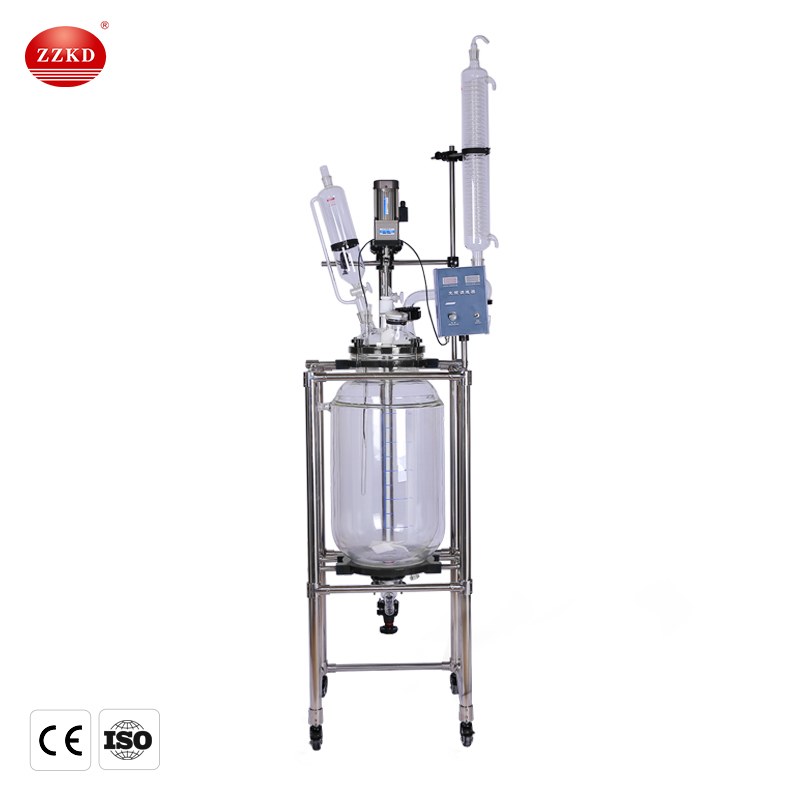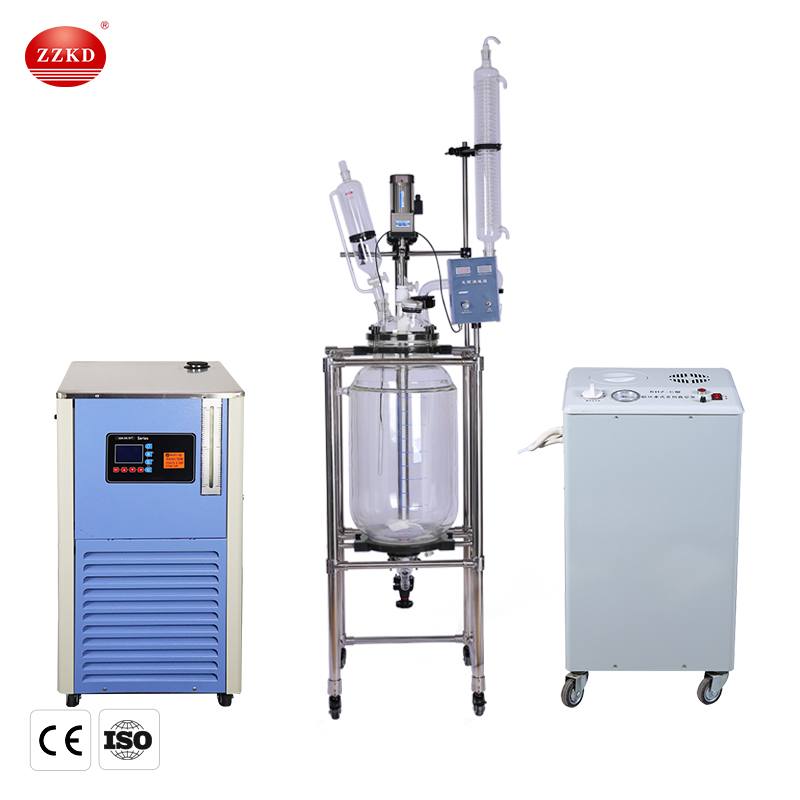10L-100L double layer wall borosilicate glass reactor
Glass reactor is one of our main products,It can be divided into single layer glass reactor and jacketed glass reactor, the use of jacketed glass reactor is largest,its capacity include:2L,5L,10L,20L,50L,100L,etc.
Laboratory glass reactors generally have small capacities of 1L, 2L, 3L, and 5L, which are suitable for stirring and reacting various materials with different viscosities under different reaction conditions.The shaft sleeve is made of lubricated graphite, ceramic, PTFE filled carbon fiber and other materials.
Requirements for laboratory glass reactor configuration:
Common laboratory glass reactors must be sufficiently resistant to pressure, because when doing hydrogenation, they must be pressurized;If it is a small-scale test, the reactor used is actually a pressure-resistant stainless steel reactor. If the stainless steel reactor has an influence on the catalyst, the reactor should be lined with tetrafluoroethylene;In small or medium-scale tests, the replaced hydrogen can be passed into the pool. Usually chemical plants have pools, which must be clean pools. When the hydrogen is released, it must be released slowly, and then pumped, and then replaced with nitrogen.
Detailed operation procedures for the use and maintenance of laboratory glass reactors:
1. When using a laboratory glass reactor, you must close the refrigerant inlet valve, release the remaining refrigerant in the kettle body and jacket, and then input the materials;
2. Turn on the stirrer, and then turn on the steam valve and electric heating power supply. When the required temperature is reached, the steam valve and electric heating power supply should be closed first, and then turn off the stirrer after 2 to 3 minutes;
3. After the test is over, after releasing the remaining condensed water in the kettle and jacket, rinse with warm water as soon as possible to brush off the attached materials, and then use 40~500C alkaline water to clean the inner wall of the container and rinse with clear water;
4. Especially when there is no material (heat-absorbing medium) in the kettle, the steam valve and electric heating power supply shall not be opened, and special attention shall be paid to the use of steam pressure, which shall not exceed the rated working pressure;
5. To maintain the laboratory glass reactor, always pay attention to the working conditions of the entire equipment and the reducer. The lubricating oil of the reducer should be replenished immediately, and the electric heating medium oil should be replaced every six months;
6. The safety valves, pressure gauges, thermometers, distillation holes, electric heating rods, electrical instruments, etc. on the jacket and kettle cover should be checked regularly. If there is a fault, they should be replaced or repaired and replaced immediately;
7. When the laboratory glass reaction kettle is not in use, it must be thoroughly cleaned with warm water on the inner and outer walls of the container, and the kettle body must be scrubbed frequently to keep the exterior clean and the inner tank bright to achieve the purpose of durability.




